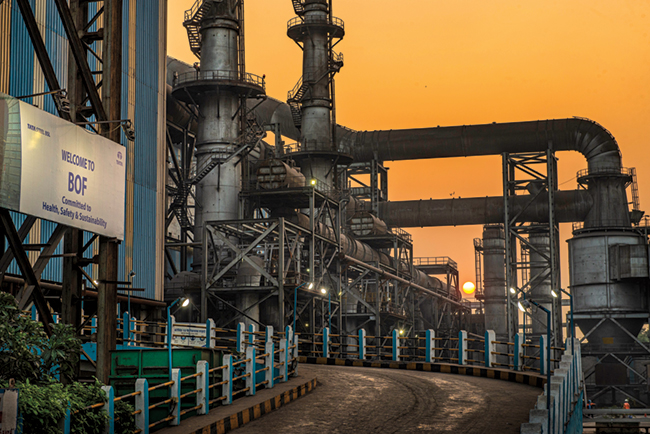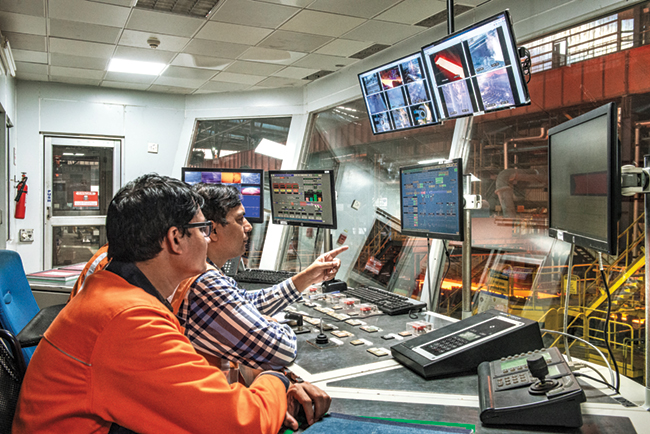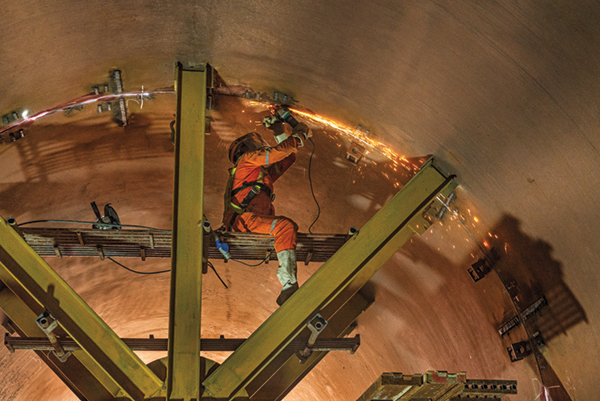
EBITDA/Turnover
Return on Average Capital
Employed
Return on Average Net Worth
Basic Earnings Per Share
SO1
SO2
SO3
Note: Figures pertain to Tata Steel (Standalone) post amalgamation of Tata Steel BSL Limited.
Key developments
Key emphasis
Turnover
(56% Y-o-Y)
EBITDA
(>2x Y-o-Y)
Net increase in cash and cash equivalents
We have a robust financial management process that assesses the requirement of funds for sustainable business operations as well as for investments towards business sustainability and growth opportunities.
The funds required over business surplus and retained earnings are met by raising funds as per market conditions to reduce finance cost and having flexible terms, in line with the cyclical nature of the steel industry.
We work towards aligning our debt maturity profile to the long gestational nature of steel projects and maintaining a flexible capital structure, in line with the business needs. This results in savings on interest cost and ensures the desired liquidity levels. Foreign exchange risks are actively managed with adequate hedging.
The funds generated are allocated to strategic investments in subsidiaries, joint ventures and in capital assets. The surplus funds are invested in shortterm instruments. Deleveraging is one of our key focus areas. Internal cash flows generated from operations are used to reduce our debts as per our annual targets.
Further, our operational KPIs are compared with internal and external benchmarks to achieve best production, higher productivity and yields. The Company ensures that business operations are un-interrupted and are at an optimum level. We ontinuously undertake cross-functional improvement programmes under Total Quality Management (TQM) and Shikhar25 for operational efficiency, product mix optimisation, waste reduction and recycling, energy efficiency and procurement optimisation. Our innovative marketing initiatives and various ongoing digital programmes provide better customer connect, reach and higher realisations. These initiatives result in margin maximisation through cost optimisation, for the generation of positive cash from business operations.
We ensure that we have the appropriate level of capital for growth projects, and ample liquidity to support and protect our operations in all economic scenarios. In line with past strategies, the Company aims to balance its growth ambitions while keeping a healthy balance sheet.
The year under review witnessed stability in the economic condition with fewer business interruptions, improvement in market sentiments as the economy progressed on the path of recovery after severe interruptions due to the pandemic in FY 2020-21. Major inputs to the financial capital were as follows:

Blast Furnace, Tata Steel Meramandali Works
Cash Operating Profit (Tata Steel Standalone)
Cash Operating Profit (Tata Steel Consolidated)

Control Room, Hot Strip Mill, Tata Steel Kalinganagar Works
The COVID-19 pandemic in FY 2020-21 necessitated a sharp focus on cash flows. The cash flow focus in our business processes has helped in optimising our working capital through better inventory management, faster collection from debtors and extended credit period from suppliers.
Repayment of long-term borrowings (Tata Steel Standalone)
During the year under review, the net increase in cash and cash equivalents was ₹450 crore as against an increase of ₹504 crore in the previous year. The increase in cash operating profits during the year was utilised primarily in working capital, payment of taxes, capital expenditure, higher dividend payments and strategic investments in Group companies for growth.
Current ratio
Equity dividend paid in FY 2021-22
All figures pertain to Tata Steel (Standalone)
The turnover during the current period was ₹1,29,021 crore, higher by 53% over previous year primarily due to significant increase in steel prices along with increase in deliveries.
The EBITDA during the current period was ₹51,456 crore, higher by 88% over previous year due to increase in steel prices, which was partially offset by higher input cost mainly in imported coal.
Capital expenditure was ₹6,288 crore, higher by 1.8x over the previous year primarily on account of Kalinganagar Phase-II expansion. Previous year, it was lower primarily to conserve the cash for liquidity during the pandemic.

Blast Furnace, Tata Steel Kalinganagar Works
*Figures for FY22 and FY21 are post amalgamation of Tata Steel BSL into Tata Steel
(%)
(%)
(%)
(%)
(`)
(Times)

Good if increases

Good if decreases